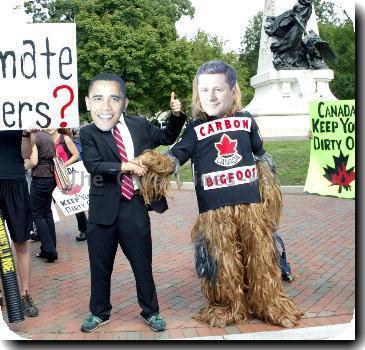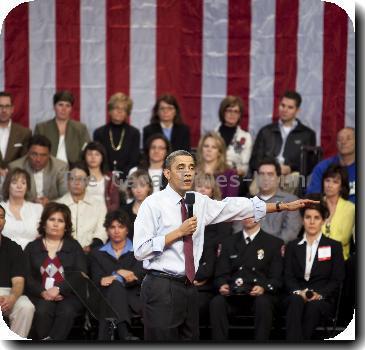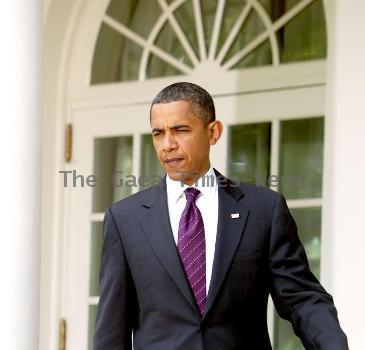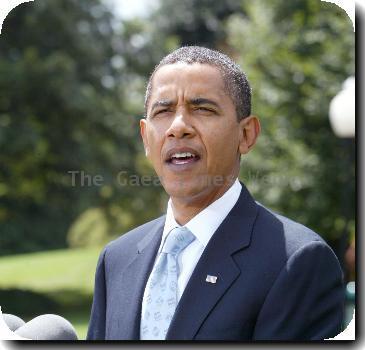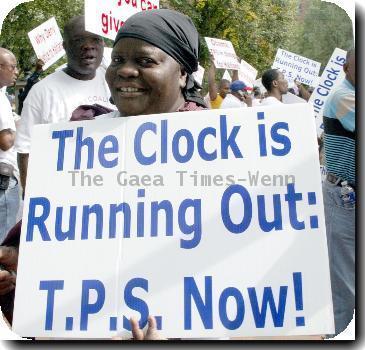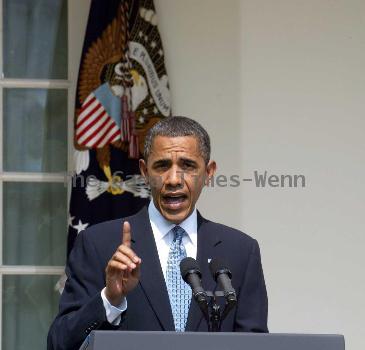Gulf spill lacks transformational punch of 1969 Santa Barbara oil spill
By Frederic J. Frommer, APThursday, July 29, 2010
Gulf spill lacks societal punch of Santa Barbara
WASHINGTON — In 1969, Sen. Gaylord Nelson was so moved after seeing the devastation of an oil spill off the California coast near Santa Barbara that he called for a national teach-in on the environment. The following year the resulting “Earth Day” kick-started the modern environmental movement and shaped the way Americans thought about their air, water and soil.
Forty years later, the magnitude of the Gulf oil spill far exceeds Santa Barbara’s spill of up to 100,000 barrels, but there hasn’t been a comparable societal transformation.
Last week, legislation imploded in the Senate to reduce greenhouse gases blamed for global warming, derailing environmentalists’ top goal, and no national consensus has emerged to move America off oil and other fossil fuels into clean energy. Even a new more modest Senate bill, aimed at boosting energy efficiency and preventing oil spills, faces an uncertain future.
Nelson, a Wisconsin Democrat who had long championed the environment, laid out the idea of a teach-in during a speech in Seattle. He wrote the speech on napkins while flying there, recalls his daughter, Tia Nelson.
The senator’s call inspired the first Earth Day, with millions participating across the country, including 2,000 college campuses and 10,000 elementary and high schools. Congress adjourned so lawmakers could give speeches. In 1970, President Richard Nixon created the Environmental Protection Agency and signed the National Environmental Policy Act and the Clean Air Act into law.
Worries about air pollution, the dangers of DDT and polluted rivers from industrial wastes played a part. But the Santa Barbara spill was the catalyst. It “triggered a social movement and helped to create a new politics, the politics of ecology,” mystery novelist Ross Macdonald once wrote.
In contrast, President Barack Obama last month used an Oval Office speech to push for clean energy, but Republicans accused him of trying exploit the Gulf tragedy for political gain. The president took it from both sides, as some liberal commentators faulted him for failing to specifically back a cap on carbon dioxide emissions linked to global warming.
The Gulf spill is estimated between 94 million and 184 million gallons, far worse than Santa Barbara’s total. But the 10-day spill from a well blowout six miles offshore covered miles of California’s sandy beaches with a thick, oily sludge. Pictures of dead seals, dolphins and thousands of birds captured the nation’s attention.
“Santa Barbara’s psychological effect was huge, and it really got into the American mind in ways that clean air and clean water and other things had a hard time doing because they weren’t personified,” says Oliver A. Houck, who teaches environmental law at Tulane University in New Orleans. “So why hasn’t BP yet had the same transformative effect? When Santa Barbara came along it was a big deal. When BP comes along, there are so many big deals that it has a hard time competing for attention. That said, I think it’s got an enormous national play.”
The Santa Barbara spill featured its own version of Tony Hayward, the former chief executive of BP who angered people early on with comments such as “The Gulf of Mexico is a very big ocean,” playing down the potential environmental impact.
In February 1969, Fred Hartley, the Canadian-born head of Union Oil Co., which owned the Santa Barbara well, told a Senate hearing in Washington:
“I am always tremendously impressed at the publicity that the death of birds receives vs. the loss of people in our country in this day and age.”
Noting there had been no loss of human lives from the Santa Barbara well blowout, Hartley added, “Relative to the number of deaths that have occurred in this fair city due to crime … it does seem that we should give this thing a little perspective.”
Hartley rejected calls to halt offshore drilling in the Santa Barbara Channel, citing arguments similar to those employed by opponents of the Obama administration’s moratorium. Hartley said he told Ronald Reagan, California’s governor then, that it would be like “making a decision to shut down the whole university educational system because there is a riot in San Francisco.”
Lois Capps, now a Democratic congresswoman representing Santa Barbara, was a young stay-at-home mother in 1969 who would often take her two children to the beaches there.
“It shaped my views along with everyone in the region,” she says. “It was such a devastating event. The spill was much closer to the shore, so we felt its impact sooner and more directly than this long, drawn-out affair we’re having in the Gulf.”
Capps says there has been a strong reaction in Congress to the BP Gulf spill, with dozens of hearings and several pieces of legislation making their way through the House and Senate. But it’s too early to draw conclusions about a societal shift, she says.
“It doesn’t happen overnight,” Capps says. “I think these things build like a tidal wave.”
Gaylord Nelson’s speech calling for a teach-in came eight months after the January 1969 spill, and the resulting Earth Day didn’t take place until more than a year later — April 1970. And it was not until 1981 that Congress imposed a ban on offshore drilling along most of the nation’s coastal waters, an action widely attributed to the memories of the Santa Barbara spill a dozen years earlier. The moratorium endured for a quarter century, until Congress lifted it in 2008.
“I think we’re going to see a really significant response to what happened in the Gulf played out over time,” says Sarah Chasis, ocean initiative director for the Natural Resources Defense Council. “I think it’s going to affect people’s consciousness, thinking, the way they approach issues for a long time.”
There are signs this is starting to happen. An Associated Press poll last month found that 72 percent of Americans rated the environment as extremely important or very important — up from 64 percent in May and 59 percent in April.
Actor Ted Danson, a board member for the international ocean conservation group Oceana, says the focus has until now been stopping the leak.
“I am hopeful. I think the time will come,” Danson says. “Oil is a very, very powerful lobby. And the basic feeling out in the world, and I think mostly created by people whose interests are in oil, is that alternative energy is a very sweet, kind, loving thought, but certainly its day has not come. We need oil.”
James “Bud” Bottoms, a Santa Barbara resident who co-founded “Get Oil Out” in 1969, says the Gulf spill reminded him of those days.
“The same thing happened here,” says Bottoms, now 82. “We stood there on our banks and saw our harbors and beaches black, about two or three inches of thick goo. We stood here and cried along our beach. We thought our lives were over here in Santa Barbara.”
Bottoms penned a children’s book in 1969 called “Davey and the GOM,” which wasn’t published until 2008. “GOM” stands for “Giant Oil Monster.”
It’s also the acronym the offshore drilling industry and government regulators use for something else: The Gulf of Mexico.
Tags: Accidents, Air Quality, Barack Obama, California, Coastlines And Beaches, Energy, Energy And The Environment, Environmental Activism, Environmental Concerns, Environmental Education, Environmental Laws And Regulations, Government Regulations, North America, Oceans, Santa Barbara, United States, Washington
